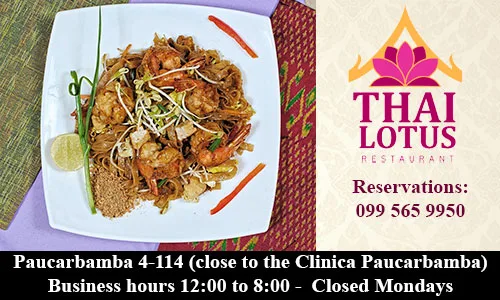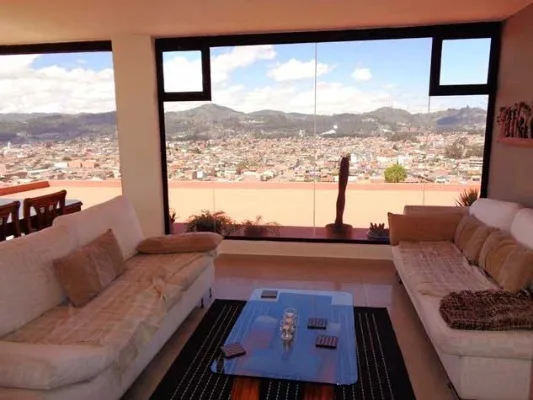Discover the charm and history of Victorian Zaruma, Ecuador’s gold mining capital
By Wendy Jane Carrel
I was invited to visit a government run senior residence in Zaruma, Ecuador and was excited to make the trip. Who wouldn’t have said yes for an opportunity not only to meet more Ecuadorian seniors, but for the chance to discover the gold capital of southwest Ecuador? I especially liked enunciating out loud the exotic sounding name – Zaruma!

City street in Zaruma.
The drive to Zaruma from Cuenca was about 4 hours over bumpy roads to the coast at Machala (banana country) and over more bumpy roads back into the mountains of Zaruma at 4,000 feet. I was traveling in an official government truck with a social services driver and an Ecuadorian senior care analyst. We stopped for lunch at Piñas, a small town known for its fog and cold as well as its orchids. We picked up a health educator on the way.
Zaruma, in the province of El Oro (oro = gold), was founded by Spanish explorer Alfonso de Mercadillo in 1595. But long before the Spaniards arrived with a fervent desire to find gold for the Spanish crown, Zaruma was inhabited by the Canar and Inca peoples.

Outside the Sexmo gold mine in Zaruma.
I visited one gold mine, Mina El Sexmo (the Sixth Mine), now a museum. My colleagues and I were required to wear rubber goulashes and a helmet. I cannot imagine how anyone then, or even now would be willing to endure darkness, dampness, and endanger one’s health day after day. Entrance is free. On weekends the coffee shop is open, providing a beautiful view of the valley below and of the surrounding mountains.
According to Wikipedia “Around 10,000 people are employed in mining directly or indirectly, producing 9-10 tons per year of the precious metal. This activity generates work for locals plus a large group of immigrants from other provinces and northern Peru. There are approximately 180 mining companies operating on 2,800 hectares of concessions. Some researchers claim that in the period 1536-1820, Spain benefited from approximately 2,700 tons of Zaruma gold.”

Zaruma’s main church.
Among the most appealing visuals of Zaruma are the “Republican era” wood walkways and old timber and stucco homes in the town center, some with gold ormolu touches and lattice work, warmer and kinder to the eye and body than modern concrete seen in new buildings throughout the Andes. Make a point to see the Sanctuary of the Virgen del Carmen, the all-wood mother church of Zaruma painted Caribbean blue inside. The altar (lined with gold and silver), and the chandeliers, not to mention the paint color, make it inviting. It was built in 1912 and overlooks the main Independence Plaza. Note: A 1749 earthquake collapsed most of Zamora’s buildings and its mines. A depression followed but the city was quickly rebuilt.

On the Plaza in Zaruma.
There’s one museum, the Museo Municipal, just off the main square. I did not have time to explore inside. I understand it holds a number of local curiosities including mining paraphernalia.
If you love birding and nature, there is Reserva Buenaventura nine kilometers from Piñas, run by Fundacion Jocotoco. Hours are 8 a.m. to 4 p.m. and admission is $15.
I spent two days visiting low income seniors at a new government-run home on a plateau overlooking a valley about ½ mile from the city center. The director (“coordinador”) is a jolly young man, a social worker, surrounded by a staff which includes a psychologist, nursing assistants, and physical therapists. Lots of “carino” as you can probably feel when looking at the photo included here of a physical therapist with her sweet charge.

The government-run senior care home in Zaruma: a lot of love.
I stayed at Hosteria El Jardin in Barrio Limoncito about ¼ mile below the city; a taxi to get there costs about $1.50 from the center. The excellent accommodations are provided by a veterinarian, Dr. Jorge Guzman, and his wife Patty. He takes care of the garden. She is fastidious and very fixed in her ways. Breakfast from 6:30 a.m. to 8 a.m., not later!! She did, after much begging, agree to serve me at 8:30 a.m. as I had slept two hours the night before. Other than that, the place is clean (check room for small spiders and do a final sweep of floors and ceilings before sleeping). It meets western standards, has comfortable new Chaide and Chaide mattresses, and if you are driving, there is a safe place for your car or truck inside the gates. YOU MUST RESERVE AHEAD as the hosteria is often completely booked with mining engineers from around the world (http://hosteriaeljardinzaruma.com/galeria.html cell phone contact numbers are 099 756-8134, 099 211-6043 e-mail: hosteriaeljardin2012@hotmail.com). About $25/night including breakfast.

The garden at Hosteria El Jardin.
Best part of all, the beautiful Hosteria El Jardin gardens, views, and, QUIET. My lungs were happy. Within hours they were dry after the dampness of Cuenca. A healing environment.
Bring dried fruit, yucca chips, herbal teas, and bottled water to keep handy during your stay. There are two decent (clean kitchen) restaurants in the city center – 200 Millas, and a small Ecuadorian place three doors down from the Cerro del Oro Hotel, same side of Calle Sucre, serving excellent local coffee. Hosteria El Jardin also serves and sells excellent zarumeno coffee. If you are a coffee lover, remember to buy some before leaving!! Apparently, there is also a good restaurant on Plaza del la Independencia, Tertulia, next to the beautiful church. Don’t know how I missed it!

The garden at Hosteria El Jardin, Zamora.
A typical Zarumeno dish is tegrillo, a concoction of baked plantains (the most abundant crop of the province) with eggs, cheese, and cream, or meat instead of cheese … I tried three bites of the cheese tegrillo, not something I would choose to order again. I did not see any “culinary” choices other than a popular local rice dish with fried pork and peanut sauce plate, and bolones de queso or bolones de mani (plaintain balls made with cheese or peanuts).

Matrimonial cabin Hosteria El Jardin, Zamora.
Another place for lodging is Hosteria Tierra Linda Mi Zaruma (see Trip Advisor for details) in Vizcaya. It has a swimming pool and is easier to get to if you have a car. In town, Hotel Cierro de Oro is basic, and a reasonable $12-$15 per person. The owners are delightful; ask for rooms facing the front otherwise you will have no windows and no light. It has comfortable Chaide and Chaide mattresses, the linens and bathrooms are a bit old but acceptable, and the floors and curtains need some attention. Call owner Gonzalo Zambrano at (07)2972505 for reservations or write cerro.de.oro@hotmail.com Gonzalo’s wife runs the wedding and quinceanera dress shop next door.

Hosteria El Jardin, Zamora.
The best time to visit Zaruma (my bias) is when it is warm and dry and there are fewer bugs, September through November. The rainy season begins in December.
Sites of interest other than architecture downtown, the main church, and the Sexmo Mine, according to the Spanish version of Wikipedia, are below. The English translation is strange but you’ll get the gist:
– Zaruma: Cerro Zaruma Urcu, Environment Landscape, Montúfar Mineralogical Museum of Antiquities, Mina El Sexmo Tourist Complex (BIRA Company, Gringos Cemetery, Pamba Ramirez Petroglyphs).
– Neighborhood Rome: Sanctuary of the Lord of Rome, Quartz Processors, Brewing where they make brandy, brown sugar and Creole.
– Ortega Neighborhood: Laguna Natural under the Bridge Road to St. Paul’s Church Ortega, Ortega River, Ortega Roosters court.
– Malvas Parish: Church and Park, Heritage House, orchid gardens, Candy and Snacks, Cerro El Boqueron, the Guava Hill, Sendero El Espino, Sendero El Guasito.
– Parish Arcapamba: Site The Church Guando Park Craft Factory delicacy, dairies, Cerro de Chinchapuro, hydraulic Mills quartz Guando River, Trail Guando Pogllo, Lomas La Posada, 4 roads, La Cabaña.
– Muluncay Parish: Church and Park, Trail Buza Muluncay-Bridge, Bay Sugarloaf Petroglyphs Buza, Bells and Pailas Factory, Bay Cup, Quarter Muluncay Chico, Chico Muluncay Trail – Sugarloaf.
– Parish Huertas: Prehispanic Settlement Guayquichuma, Church and Central Park, Byron Prehispanic Settlement, Cave of Brokers, Quebrada Honda, Tomagatillo-Sidrapamba Trail, Waterfall Cachicarana.
– Sinsao Parish: Church and Park, production of brown sugar and spirits
– Parish Salvias: Cerro de Arcos, Cerro Chivaturco, Salvias petroglyphs, waterfalls Chorro Blanco, Chacacapac, El Molino, jumon, Dur Dur, Dark Hollow, Papa Beto Lagunas, San Jose, Laguna de Arcos, Rio Palmas.
– Parish Guizhaguiña: Chinchilla Laguna, San Pablo Petroglyphs, Stone Ball, Chepel, Payama, Braids, prehispanic settlements in San Antonio, Sanctuary of the Virgin delos Remedios, Pilgrim House, Lagunas Negra, gripe, of yoked, El Campanario.
– Parish Guanazan: Archaeological, Epigraphy of Guinacho, Ciquircalo prehispanic settlements, Paltacalo Cerros, El Tocto.
– Abañín Parish: Monoliths with human figure, landscape, park and church.
Resources:
http://es.wikipedia.org/wiki/Zaruma
www.visitezaruma.com
http://www.zaruma.gob.ec/
http://www.eloro.gov.ec
www.ecostravel.com
_______________
Wendy Jane Carrel, M.A., has been researching and writing about health care options for older adults in Chile, Ecuador, and Mexico for the last three years. She has lived or worked on four continents in over 40 countries.
All photos by Wendy Jane Carrel


















